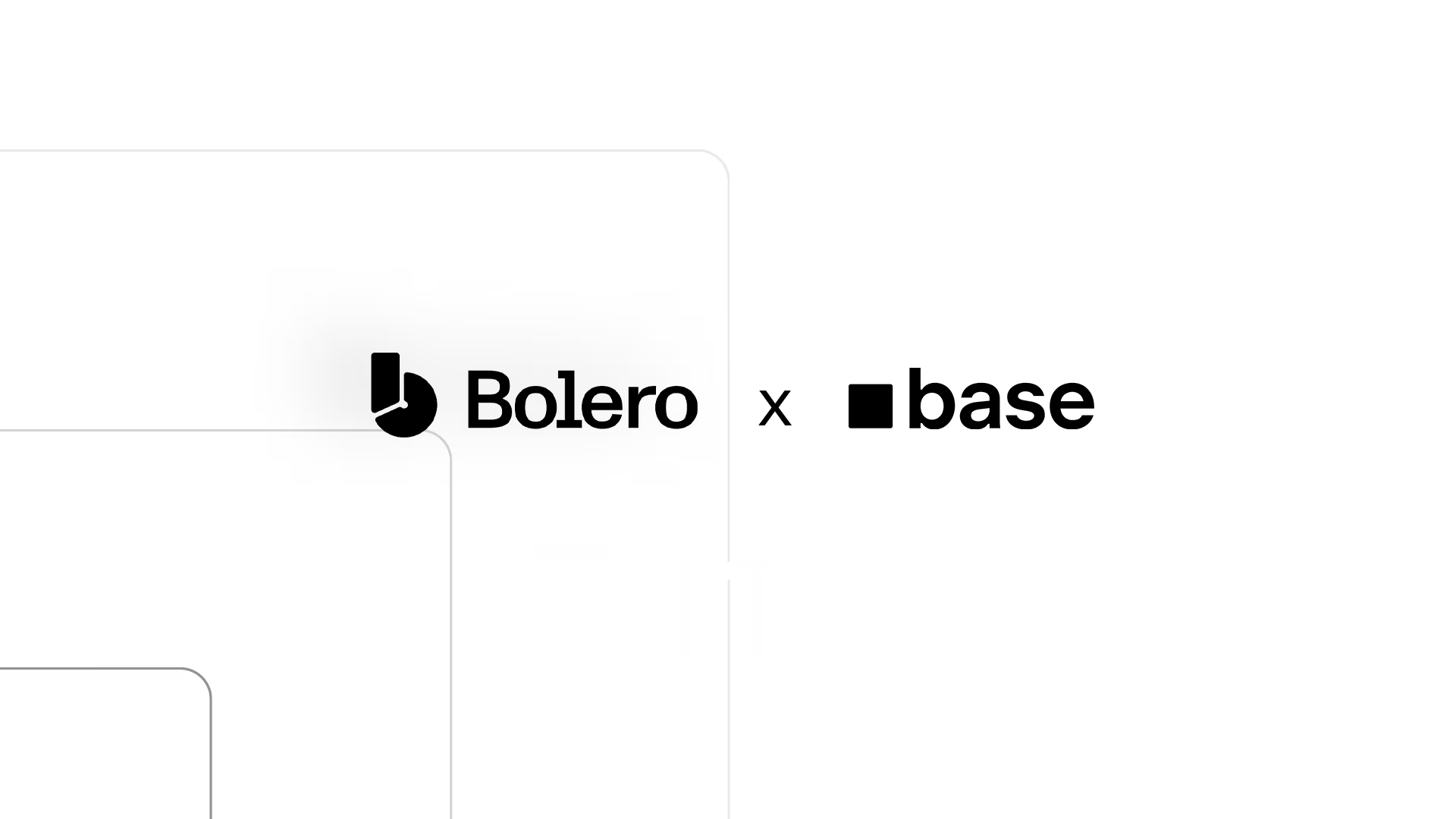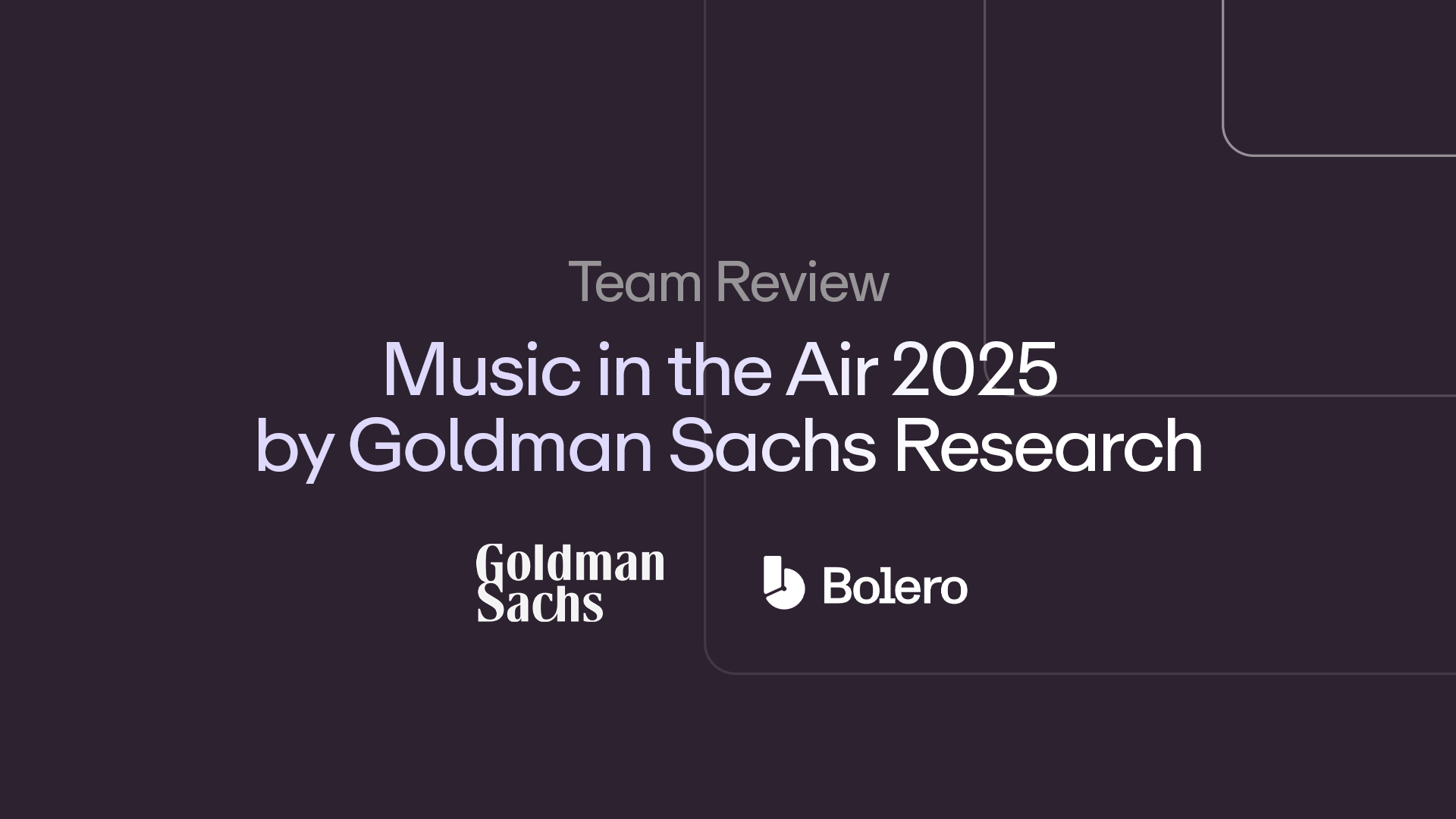A guide to music investment on Bolero
You listen to your daily tracks, you see tours filling stadiums... and you discover that it's possible to invest in the rights that generate revenue from these musical works.
On Bolero, we've created a music rights market based on well-known financial securities: bonds and debt securities backed by music rights. This means that each security or bond tracks revenues from the commercial performance of songs, for the entire lifetime of the right (up to 70 years after the death of the last author-composer of a work).
To start, simply create an account, deposit funds, then explore the primary market listings (new issues) and secondary market (resale of assets between investors), to select assets that match your strategy. The platform makes it easy to invest in music catalogs of all sizes, and everyone can choose to position themselves on a single asset or several to diversify their portfolio.
Bolero also offers a secondary market that allows you to buy and sell Song Shares to arbitrage your positions if necessary.
To guide you through your first steps, let's start by clarifying the two formats offered on the platform: Song Shares and Catalog Shares.
These are the two types of assets that open the path to investing in music rights.
What is a song share?
A Song Share is an asset that allows you to invest at the level of a work or recording (a song)
You choose a track (a work / a track from an album) and buy a share of that specific title. As a result, you'll be exposed to the commercial performance of a specific song.
What is a catalog share?
A Catalog Share is an asset covering a group of tracks, also called a basket of tracks. When an artist, producer, or publisher decides to list their catalog on Bolero, you can invest in this basket of songs. Its composition doesn't change; it's fixed from the moment the asset is issued on the market.
In other words: you're exposed to the returns of hundreds of tracks through a single asset, which provides built-in diversification.
The music rights involved
Whether you opt for a Song Share or Catalog Share, you're investing in music rights, i.e., the intellectual property that protects works and recordings. There are two types with specific revenue sources: master rights and publishing rights.
A Song Share carries a single underlying: meaning it exposes to one type of right: either master rights or publishing rights.
A Catalog Share, on the other hand, can carry both underlyings or just one. It can carry only master rights, or only publishing rights, or carry both rights.
Revenue sources for master rights
Master rights generate revenue through 4 revenue sources:
- Streaming (80% of revenues)
- Downloads
- Physical sales
- Synchronization (placement of tracks in films, ads, series)
Revenue sources for publishing rights
Publishing rights tap into different sources:
- Streaming (20% of revenues) and digital platforms
- Video platforms like YouTube
- Radio airplay
- Public performances (clubs, cafes, hotels, restaurants)
- Synchronizations (placement of tracks in films, ads, series)
If you want to learn more about revenue sources, go here: (link to the other article)
Why choose one over the other?
Actually, you're not obligated to choose. We offer both to satisfy all strategies. Each asset format offers distinct advantages.
Song Share: This asset allows you to invest in a particular track/work, meaning a more concentrated investment. Your returns can be higher but their fluctuation as well.
Catalog Share: This asset allows you to invest in multiple tracks/works with a single asset, to reduce fluctuations and stabilize your returns.
A Concrete Example
On Bolero, you can invest in the work 'Pookie' performed by Aya Nakamura.
There are two ways to approach it:
You want to invest exclusively in 'Pookie', and maximize your exposure to the returns of this particular work. You should choose the Song Share format.
You want to invest in 'Pookie' but also protect your diversification through other works in the repertoire. You should choose the Catalog Share format, which in this example refers to 'Low Wood', a catalog comprising 'Pookie' and 115 other songs.
A matter of profile and investment thesis
The choice between Song Shares and Catalog Shares depends primarily on your investment style. If you favor active management, connect regularly, follow the news (releases, tours, syncs, playlisting), and arbitrage your positions on the secondary market, Song Shares are better suited: they allow targeted exposure to a specific title, with more pronounced catalyst potential... and more visible volatility.
Conversely, if you're seeking more passive management, with monthly or quarterly monitoring, Catalog Shares offer diversified exposure to a set of works (artists, genres, periods) and a revenue trajectory generally smoother over time.
In practice, align your choice with your horizon, risk tolerance, and knowledge of the works: tactical conviction on a track (Song Share) or strategic exposure to an editorial signature (Catalog Share).
Important: Bolero does not provide investment advice; investing involves risks and past performance does not predict future performance.
How the secondary market works
Whether Song Shares or Catalog Shares, your shares can be put up for sale at any time on the secondary market. You place a sell order at the price per share of your choice; this order becomes visible to the entire Bolero community until execution (total or partial) or cancellation.
On the buy side, two approaches coexist:
Instant purchase: You select the desired quantity and the platform automatically executes against the best available offers (from lowest to highest price). If your order "sweeps" several sellers, a weighted average price is calculated, with display of the corresponding Annual Equivalent Return (AER).
Buy order (limit): You set a maximum price per share; the order executes only if a corresponding offer exists and a user agrees to sell you their asset(s).
The Annual Equivalent Return (AER) is the reference indicator displayed per share: it translates, at a given moment, the relationship between the observed royalty flow (history available on the platform) and the price paid. It allows for quick comparison of assets, at given price and risk. However, keep in mind that this return is indicative and not guaranteed: royalties vary according to the actual exploitation of works (streams, syncs, performances, etc.).
To optimize your secondary market decisions, consider:
- Liquidity (volume of offers and buyers, spread width)
- Royalty stability (seasonality, trend)
- Rights scope (publishing/master, territories)
- Potential catalysts (tours, sync placements, album anniversaries)
In short: the annual equivalent return is your compass, but it should be evaluated alongside price, liquidity, and the quality of underlying flows.
Important: Bolero does not provide investment advice; investing involves risks and past performance does not predict future performance.
Some available examples
Song Shares
Among the works recently listed as Song Shares, you'll find titles performed by Jul, Agoria, Tiakola, or Hatik (for example Angela), as well as tracks like Ma Casio or others. The selection evolves regularly: the goal is to offer works that are both iconic and enduring, supported by royalty histories viewable on the platform.
Catalog Shares
USA VOL.1: A catalog of over 104 tracks covering R&B/Pop from the 2000s, with titles performed by Mario Winans, Usher, Ginuwine, Jennifer Lopez, Lil' Kim, or Beyoncé. A coherent basket to capture diversified publishing flows (performance, mechanical, syncs) on established repertoires.
Le Motif: Over 400 tracks from a roster of 150+ artists, including performers of works such as Jul, Gazo, Booba, Damso, Shay, or Meryl. A resolutely urban and multi-generational angle, rooted in the golden age of French hip-hop, with recurring catalysts (tours, social trends, syncs).
Note: Availability varies over time. The artists are mentioned as performers of listed works; this is not a partnership or capital link with Bolero.
In summary
Song Shares and Catalog Shares each offer distinct advantages. Together, they enable you to build a well-structured and diversified music portfolio: targeted positions in individual tracks alongside broader, more stable exposure through editorial catalogues. You're free to allocate according to your investor profile, time horizon, and sector views.
Today, Bolero offers access to over 3,500 works through these two asset classes. To further your understanding (reviewing royalty histories, grasping the scope of rights, spotting catalysts), do consult our other practical guides.
Important: Bolero does not provide investment advice. Investing involves risks, and past performance is not indicative of future results.










